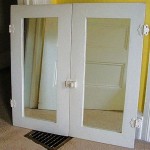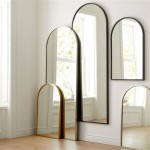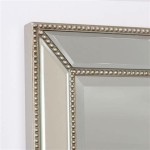How to Mirror Phone to a Non-Smart TV
Mirroring a phone's screen to a non-smart TV opens up a world of possibilities, from sharing photos and videos with family and friends to enjoying mobile games on a larger display. While smart TVs offer built-in mirroring capabilities, non-smart TVs require external devices to achieve this functionality. This article explores several methods to mirror a phone to a non-smart TV.
Using HDMI Adapters
HDMI adapters offer a wired solution for mirroring a phone to a non-smart TV. These adapters typically connect to the phone's charging port and provide an HDMI output to connect to the TV.
Key Considerations for HDMI Adapters:
- Compatibility: Ensure the adapter is compatible with the phone's operating system (Android or iOS).
- Cable Length: Choose an appropriate HDMI cable length based on the distance between the TV and the seating area.
- Power Source: Some adapters require external power, while others draw power from the phone.
Utilizing Wireless Display Adapters
Wireless display adapters offer a cable-free approach to screen mirroring. These devices connect to the TV's HDMI port and create a wireless network that the phone can connect to. Popular options include Chromecast, Roku Streaming Stick, and Amazon Fire TV Stick.
Key Features of Wireless Display Adapters:
- Ease of Use: Simply connect the adapter to the TV and follow the on-screen instructions to connect the phone.
- Wireless Connectivity: Eliminates the need for cables, providing a clutter-free setup.
- Streaming Capabilities: Many wireless display adapters also offer streaming services, enhancing the TV's functionality.
Leveraging Screen Mirroring Apps
Certain apps facilitate screen mirroring between a phone and a non-smart TV via a compatible device connected to the TV. These apps typically require both the phone and the connected device to be on the same Wi-Fi network. Research specific apps compatible with the chosen mirroring hardware.
Important Factors for Screen Mirroring Apps:
- Network Compatibility: Ensure both the phone and the connected device are on the same Wi-Fi network.
- Device Compatibility: Verify app compatibility with both the phone and the connected device (e.g., Chromecast, Roku).
- App Functionality: Some apps offer additional features like media playback controls and screen capture.
Connecting with a Laptop and HDMI Cable
An alternative approach involves using a laptop as an intermediary. Connect the laptop to the non-smart TV via an HDMI cable and then mirror the phone's screen to the laptop. This method may require specific software on the laptop depending on the phone's operating system.
Points to Consider for Laptop-Based Mirroring:
- Laptop Requirements: A laptop with an HDMI output port is necessary.
- Software Compatibility: Ensure any required software is compatible with both the phone and the laptop's operating system.
- Connection Stability: Maintaining a stable connection between the phone and laptop is crucial for smooth mirroring.
Employing DLNA-Certified Devices
DLNA (Digital Living Network Alliance) certified devices can share media files with each other over a home network. If the phone and a device connected to the non-smart TV (e.g., Blu-ray player, game console) are DLNA-certified, media files can be streamed from the phone to the TV, although this doesn't mirror the entire phone screen.
Key Aspects of DLNA Mirroring:
- Media Sharing: Focuses on sharing media files rather than mirroring the entire phone screen.
- DLNA Compatibility: Both the phone and the connected device must be DLNA-certified.
- Network Setup: Proper network configuration is crucial for seamless DLNA connectivity.
Using Miracast-Enabled Devices
Miracast technology enables wireless screen mirroring between compatible devices. If a Miracast-enabled device is connected to the non-smart TV, the phone's screen can be mirrored wirelessly. Some Blu-ray players and streaming devices support Miracast.
Considerations for Miracast Mirroring:
- Device Compatibility: Both the phone and the connected device must support Miracast.
- Network Requirements: A stable Wi-Fi network is necessary for optimal performance.
- Performance Variations: Miracast performance can vary depending on the devices and network conditions.
Connecting Through Gaming Consoles
Some gaming consoles, such as PlayStation and Xbox, offer screen mirroring capabilities. Connecting the phone to the console's network and using the console's screen mirroring feature can mirror the phone's display to the TV.
Key Points for Console-Based Mirroring:
- Console Compatibility: Check if the specific gaming console supports screen mirroring from mobile devices.
- Network Configuration: Proper network setup is required for connecting the phone and console.
- Console-Specific Instructions: Refer to the console's user manual for detailed instructions on screen mirroring.

How To Mirror Phone On Non Smart Tv Chromecast Screen Mirroring Hindi

How To Screen Mirror Iphone A Non Smart Tv

How To Connect A Phone Non Smart Tv Wired Wireless Solutions Pointerer Com

How To Mirror Android Screen Non Smart Tv Slashdigit

How To Mirror Phone Non Smart Tv Very Easyly
How To Cast My Mobile Wirelessly A Non Smart Tv Quora

How To Connect Your Phone A Tv That Is Not Smart Screen Mirroring Non Routerctrl

How To Mirror Phone On Non Smart Tv Chromecast Screen Mirroring Hindi

4 Simple Ways To Mirror Phone Screen Without Wifi

2024 Tutorial How To Mirror Phone Tv Without Wi Fi








